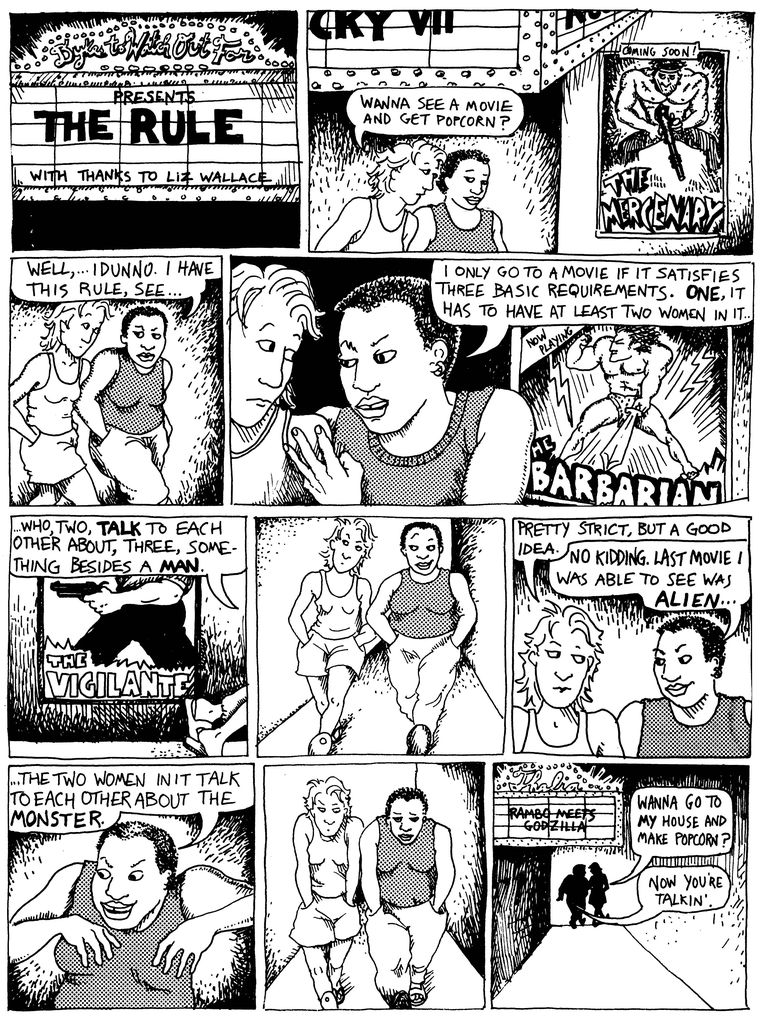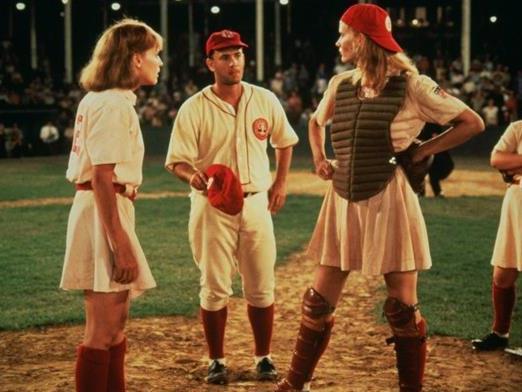Image: A League of Their Own passes with flying colours.
Lord of the Rings fails miserably, The Hunger Games passes with flying colours and The Social Network should just give up altogether.
The Bechdel test, named after a cartoon by Alison Bechdal, rates films, books and other works of fiction based on gender representation. In order to get an A rating, a work must have at least two named female characters who talk about something other than a man.

Some cinemas in Sweden have begun highlighting a film’s rating in order to make people more aware of the implicit gender bias that exists in films. The ultimate goal is to see more females in starring roles on our screens.
The initiative is starting to catch on throughout Sweden and is supported by the Swedish Film Institute. Not everyone agrees the Bechdel test accurate representation of gender inequality and that some films that pass the test, such as Sex and the City 2, are more damaging to women than films that do not pass.
For example Mud, released this year to critical acclaim, would fail the test but is much more valuable in terms of examining human relationships than something like The Sisterhood of the Travelling Pants, which passes.
A Scandinavian cable TV channel Viasat Film will also begin using the rating from 17 November when it will only show A-rated films in celebration of its introduction. The advertising ombudsman in Sweden already watches out for sexism in advertising, and castigates those who enforce gender stereotypes.
While this seems forward thinking to some, to others it seems too controlling. In America, for example, this law would not fly without outcry about governmental control.
Yet according to a recent study in the United States, which examined the gender roles of speaking characters from 2007 to 2012, female representation in film is a sorry state of affairs.
The study analysed the top 100 grossing films of each year, which amounted to 500 films and 21,000 speaking characters. It found that of the 4,475 speaking characters in films from 2012, only 28.4% were female. Only 6% of films in 2012 featured a balanced cast, and men usually outnumbered women by 2.5 to 1.
The statistics behind the camera were no more optimistic. Only 16.7% of the directors, writers, and producers were female across the 100 top-grossing films of 2012. Women accounted for 4.1% of directors, 12.2% of writers, and 20% of producers. This is a ratio of more than 5 to 1.
Yet, despite this obvious under-representation, many feel that the test is not the answer.
Luke Owen writes on Flickering Myth in Why the Bechdel Test Doesn’t Work, ‘The funniest thing about the “test” is that there are films that pass the criteria, but are terrible movies with woeful presentations of the female gender.’
Owen cites both of the Sex in the City films as ‘horrific representations of “today’s woman” whose only concern is getting married and buying shoes.’
He writes, ‘Do you know what else passes the test? Transformers. That’s right, one of the most misogynistic and pornographic depictions of a children’s action figure passes the Bechdel Test as it features a scene where two named female characters talk to each other about how pretty Mikaela is rather than how annoying Shia LaBeouf is. Because of this one scene, a Michael Bay movie which features a panning shot of Megan Fox’s backside bent over a car passes the Bechdel Test.’
